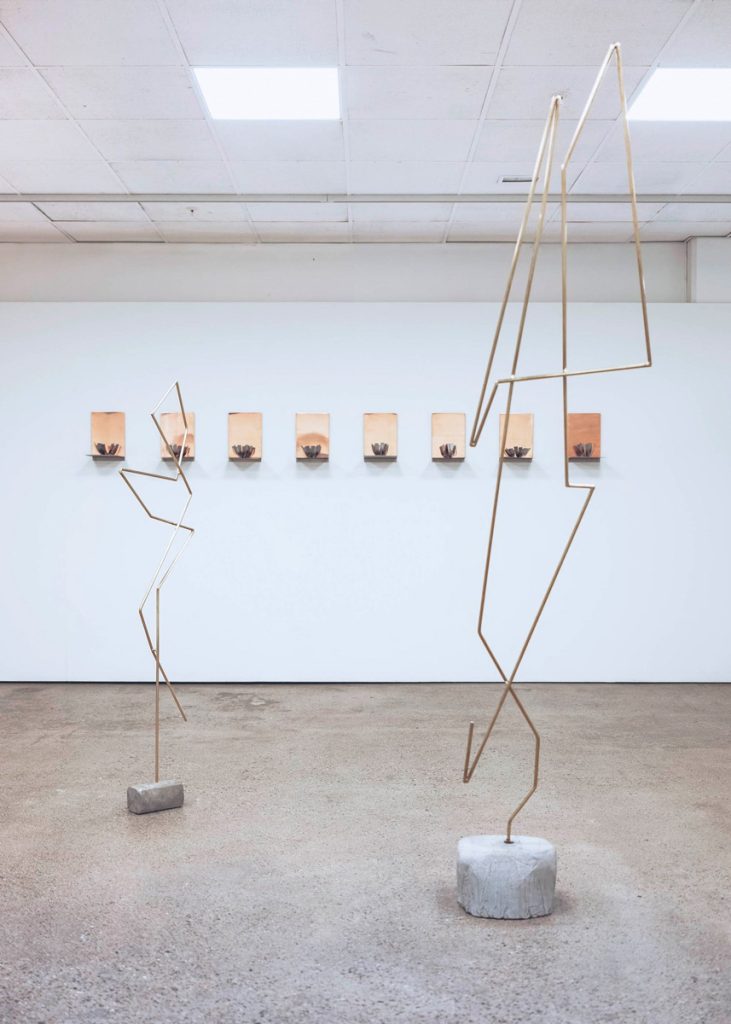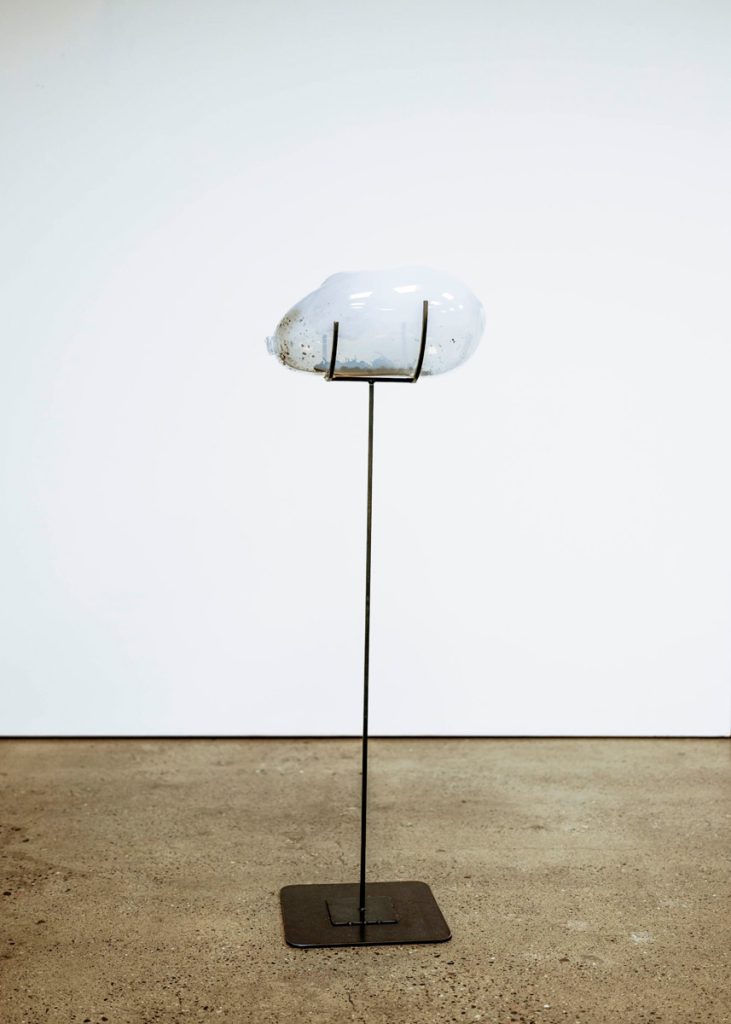Anne Guro Larsmon og Mia Van Veen
Skulptur
Åpning torsdag 11. november kl. 18.30
Åpnent lør/ søn kl. 13 -16
eller ved avtale tlf: 926 64 315
Utstillingen står til søndag 28. november
The exhibition Tombac features new work by Anne Guro Larsmon andMia Van Veen who both work with an aesthetic drawn as much from ecological analysis as from a close reading of our designed environment. More specifically, both artists take inspiration from the ornaments that occupy the edges of nature and architecture, be that Nordic wildflowers or decorative glass and metalwork traditions. The title Tombac refers to the double-sided nature of this work. Tombac is a natural resource most commonly extracted to be used as a cheap and malleable substitute for more precious medals. The proletarian substitute for more precious medals such as silver and gold, Tombac is often enlisted to make costume jewelry, medals and ammunition.
What is highlighted in each artist’s work is a welding together of structure and sensibility. The juxtaposition between geometrically formed heavy metals such as steel, with more fleeting materials such as scent, glass and light, strikes a dialogue with the structures and sensibilities of arte povera of southern Europe, albeit with an aesthetic responding specifically to the geography and climate of Northern Scandinavia. Perhaps what this work attempts to visually grasp is what Frédéric Neyrat has referred to as “an ecology of separation” — pinpointing the “ontological precarity” that exists between nature and science. In this regard, the relational character of these works points to Marcel Duchamp’s definition of inframince, a term he came up with to refer to ephemeral, ultra-thin, and undecidable phenomena — “such as the warmth that remains on a chair after a person gets up.” In both of these artists’ work, heat, cold and light are traced as they intersect with our bodies in both the natural and built environment. While rooting itself in conditions and traditions that are distinctly northern, these works turn clichéd conventions into tropes that lead them away from any simple form of national romanticism to address a less heroic and global condition of being.



